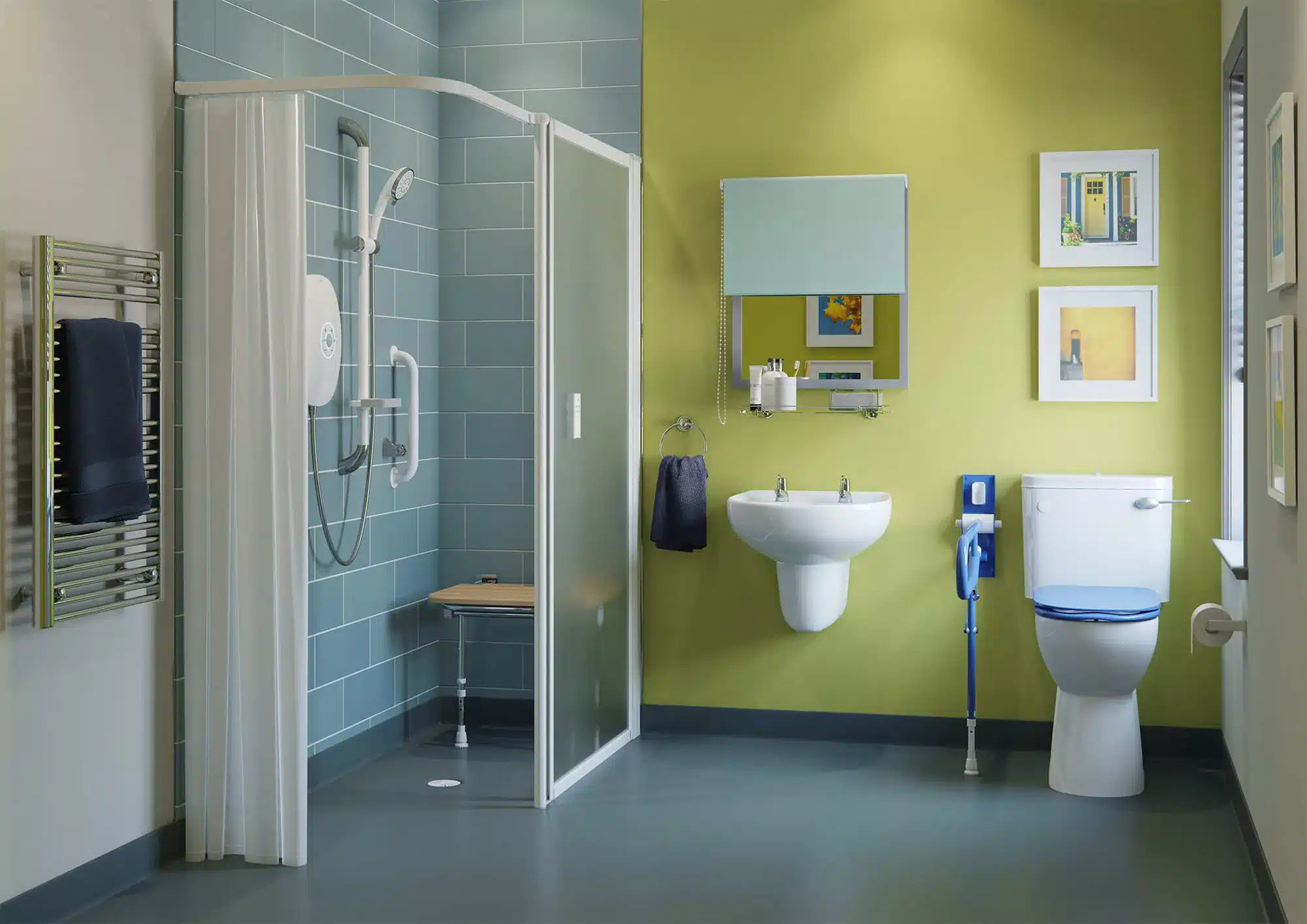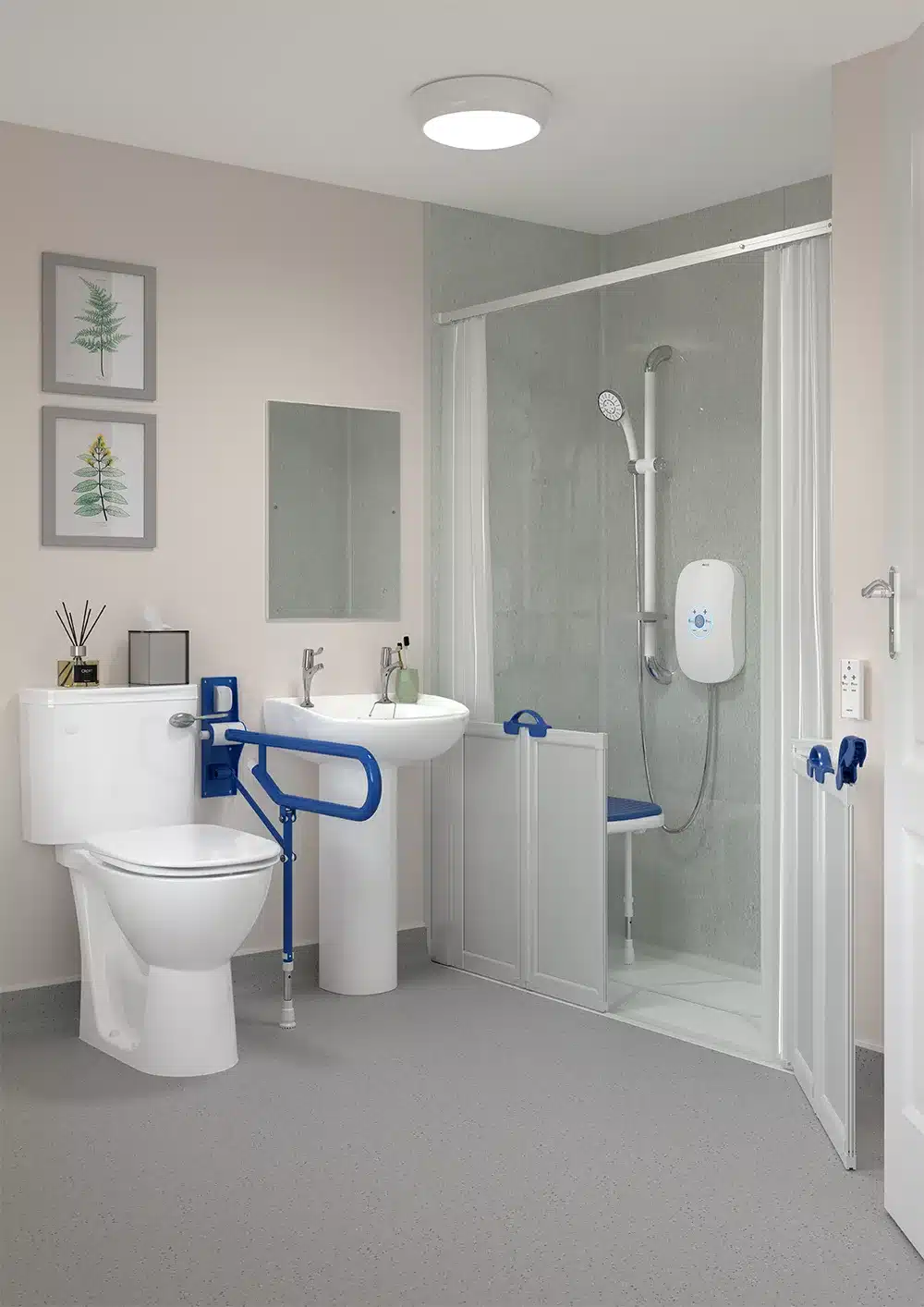Updated January 2025
If you or a loved one uses a wheelchair, making adaptations to your home could make a big difference. Small touches like introducing ramps by the front door or having a level-access shower will make it safer and easier to navigate your home. Having a wheelchair-accessible home is crucial in supporting the independence and care of wheelchair users.
In this article, we’ll explore 10 adaptations that can make your home more wheelchair friendly.
If you’re considering minor upgrades, especially in your bathroom, our team at Age Care Bathrooms is here to help. Contact us today to discuss how we can create a more mobility-friendly living space for you.
How to Make Your Home More Wheelchair Accessible
Making small changes to your home can have a big impact on your comfort, safety, and independence. Adaptations should support your lifestyle without compromising on style or functionality.
Before the changes start, it’s key to know the size of your wheelchair. The height and width will need to be considered when you make alterations like wider doorways and halls or lowering your kitchen countertops.
Here are our top 10 recommended design changes:

1. Replace steps with ramps
Steps present a hazard not just for wheelchair users but also for those with limited mobility. Many homes have a step or two leading up to the front door or within the home. Replacing these steps with a ramp or using a portable option will improve accessibility. Consider collapsible ramps for easy storage or threshold ramps that make an entryway instantly accessible.
2. Install a stair lift
Stair lifts come in various styles and can be installed as a permanent home modification or used as an on-the-go solution, such as a stair climber. They turn multi-level homes or even front garden steps into wheelchair-accessible homes. Installing them will level out your home and create a safe, accessible space.
3. Wider doorways and halls
For wheelchairs and walkers, it’s best to choose a wider door. Most doorways are 23–27 inches wide, but it is recommended that a door frame needs to be at least 32 inches wide to accommodate a wheelchair. French doors or sliding doors designed by specialists are popular options.

4. Update your bathroom
A bathroom is a place we associate with relaxing and having “me” time. Here at Age Care, we specialise in designing and installing the bathroom of your dreams; you don’t need to compromise style, comfort, or safety.
We recommend updating to a wet room due to its mobility-friendly features. Wet rooms offer completely unrestricted access to all areas of the bathroom, including the shower area, with all the water directed towards the centralised draining point and waterproofed walls and floors, making it easy to maintain.
5. Use mobility aids
We recommend introducing mobility aids around the house and by the front door for improved independence and peace of mind. Grab rails in the bathroom will decrease the risk of falls and help users lift themselves up from seated positions and move to a seat in the level-access shower. Grab bars and safety rails by the toilet, sink, and baths help to make manoeuvring around the bathroom easier.
6. Remove door handles
Many styles of door handles are cumbersome and hard to use for those who have a hard time gripping. Replacing door knobs with push or pull bars, press lever handles will increase your home’s accessibility. Automatic doors are another great option to consider for ease of use, especially if mobility is very limited.
7. Organise your space
Creating clear spaces where you can relax, leave your shoes, cook, shower, or put away clothes can make moving around your home easier and safer without the worry about falls. Ensure your everyday items — such as chairs, bookshelves, plates and utensils — are easy to access.
8. Updating your sink and countertop height
Whether you’re adjusting countertop heights or installing a new sink, these alterations can improve accessibility in a wheelchair-accessible home. Sinks with roller legs under to use the faucets or ones that can be moved up and down help for easy use. You can install lower kitchen countertops and units for convenience.
9. Be mindful of your spaces
Surfaces such as tiles can be quite slippy. Hardwood floors, thick rugs, and rough grout can also present dangers for those using wheelchairs and aids such as walkers and canes. In some cases, it may be best to carpet your surfaces with smooth, even carpeting. Or, perhaps you could replace some rugs that slip and slide easily. Be sure to install grippy mats in bathrooms and showers. Ensure all surfaces in your home do not pose any tripping or slipping threats.
10. Go digital
The latest technology allows for high-tech modifications in your home, such as automated lighting, heating, blinds, and digital showers. Opting for digital solutions can significantly improve accessibility and ease of living by removing barriers to engaging with everyday activities.

Make Your Space More Accessible With the Help of Age Care
If you’d like to learn more about adapting your bathroom to make it wheelchair friendly, speak to the Age Care Bathrooms team today. We offer a range of bathroom solutions that help create a stylish, comfortable, and safe space, giving you independence and security.
Or, if you would like to see our designs in action, why not download our mobility brochure? It is packed with bathroom designs, our products and our processes.
